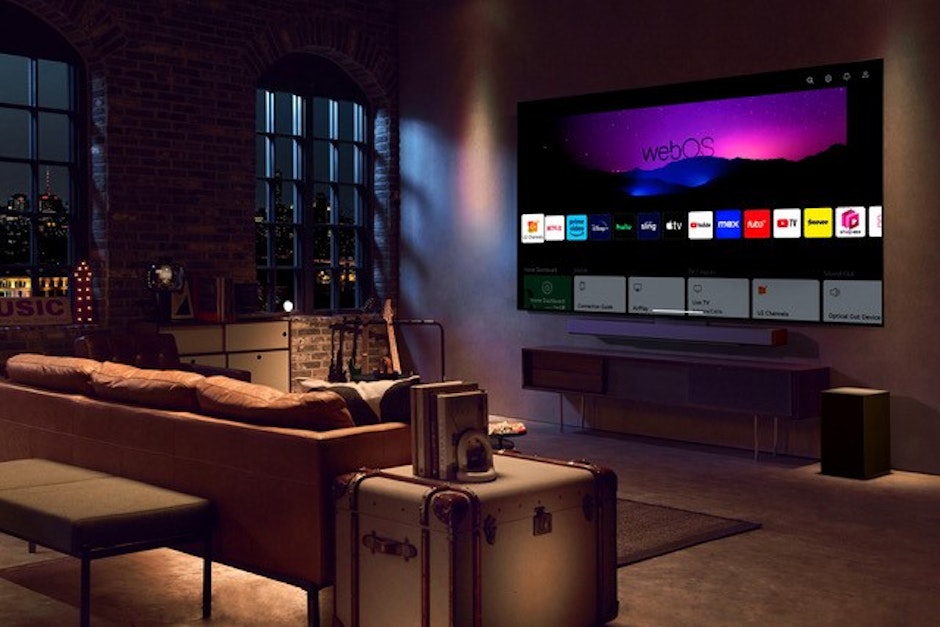Fast forward forecast: What will be the top CTV trends in 2024 and beyond?
CTV thought leaders are consulting their crystal balls to give you their top predictions for 2024. But some, like LG Ad Solutions' Tony Marlow, are looking even further ahead than the next 12 months.

Around this time each year, thought leaders in various industries peer into their crystal ball to anticipate the key trends for the upcoming year. This effort, a blend of art and science, is both exciting and dynamic. In light of recent economic uncertainties, it has become essential for industries to strike a balance between swift, adaptive change and measured strategic thinking.
In the face of unforeseen developments, innovation can surge forward unexpectedly. Just a year ago, the launch of generative AI, like ChatGPT, marked a significant shift in the industry's landscape.
Looking ahead to 2024, forecasting the evolution of fast-changing advertising channels like CTV is challenging yet promising. Marketers who aim to fully leverage CTV and optimize their spend must think even further ahead.
Here's a glimpse into the long-term developments shaping the UK connected TV (CTV) landscape in 2024 and beyond.
Everyday AI
The artificial intelligence (AI) revolution is set to continue at a brisk pace in 2024, changing workflows across industries and transforming numerous jobs. By the year's end, these tools will be an integral part of our daily lives. In advertising, AI will streamline many tasks, allowing marketers to concentrate on strategy and creativity. In CTV, AI will enhance every facet of the buying process, from targeted data analysis to dynamic creative optimization, enabling marketers to execute more intelligent campaigns.
In CTV, AI's role will be pivotal throughout the buying process, fostering smarter campaigns. AI's applications will range from enhanced data analysis for targeting to dynamic creative optimization, freeing up more time for strategic and creative efforts.
AI will also streamline smaller, more labor-intensive tasks. Already, tools are available that let marketers easily adapt campaign creatives across channels, reducing the need for extensive manual work.
By the end of 2024, AI's normalization will empower every marketer to approach campaigns more effectively and creatively.
CTV's growing dominance
In the US, a recent milestone was reached when linear TV viewing dropped below 50% for the first time, while CTV viewing climbed to 38.7%. In 2024, it's almost certain that CTV viewership will continue its march toward crossover. Within the next three years CTV will likely become the primary television viewing experience with incremental reach obtained from linear laggards (rather than the other way around).
The UK's transition to CTV has been more gradual, influenced by the strength of traditional broadcast channels. However, as UK and EU consumers increasingly embrace streaming, marketers and advertisers must swiftly adapt their strategies and media investments to meet this shift.
This year, a significant portion of TV viewers reported watching less linear TV than in the previous year, signaling a trend towards CTV. This transition will fundamentally alter media buying practices. Initially seen as a tool for incremental reach, CTV's rapid adoption is redefining its role. Advertisers need to prepare for this shift, involving restructuring and partnering with OEMs for better market insights. Early preparations will place advertisers in a stronger position at the CTV tipping point.
Innovations in native advertising
Recently, consumer behavior has been shifting from SVOD platforms to AVOD services, influenced by economic factors. In response, viewers are increasingly embracing ad-supported content, with a significant preference for streaming free content over paid subscriptions.
As consumers continue to blend SVOD, AVOD and emerging channels such as free ad-supported streaming TV (FAST), marketers are leaning in. Native CTV ads, appearing prominently on the television home screen, provide a unique opportunity. Native ads engage consumers when they turn on the TV, before they select their content and regardless of the channel they ultimately end up watching, offering a significant window for impactful advertising.
And with users taking six minutes on average to find the content they want to stream, this leaves advertisers with a large window of opportunity. Marketers will need to start taking steps to perfect their native strategy over the next year, because by 2025 this will be a staple of CTV campaigns.
Reuniting the media landscape
The CTV landscape is rapidly evolving, offering new content viewing choices to consumers and opportunities for marketers to find new and innovative ways to reach them. As CTV matures, signs of a more cohesive ecosystem are emerging, with consolidation and advanced measurement technologies like ACR aiding in more accurate cross-channel measurement. This more unified landscape will benefit audiences and advertisers alike.
The past years have taught us to expect surprises, but the trends towards the future of CTV are clear. Advertisers who proactively adapt to these changes will be well-positioned in the evolving media landscape, ensuring their place at the forefront of this dynamic channel.

